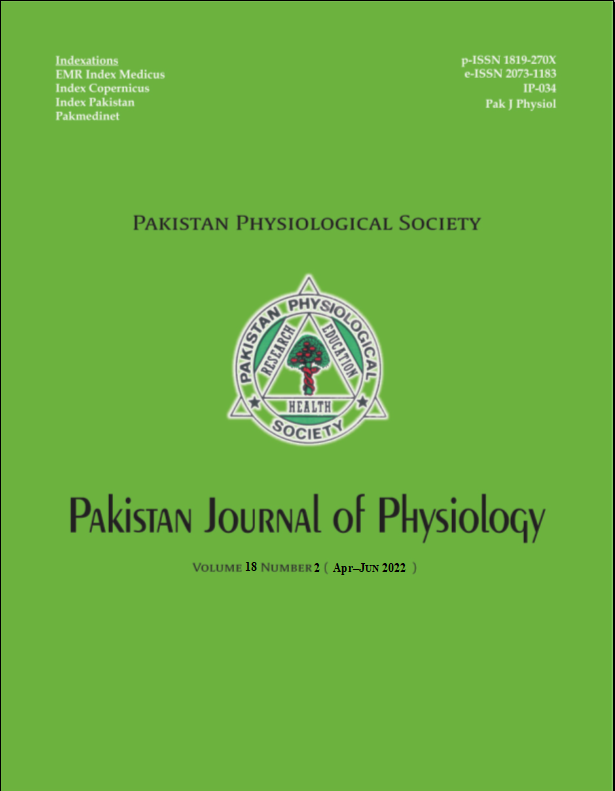TERATOGENIC EFFECTS OF TOPICALLY APPLIED PARAPHENYLENEDIAMINE ON THE RAT FOETUS
DOI:
https://doi.org/10.69656/pjp.v18i2.1412Keywords:
Paraphenylenediamine, Sprague Dawley, teratogenic, topical application, hair dye, fetusAbstract
Background: Paraphenylenediamine (PPD) is an organic compound used in hair dye. It causes local and systemic side-effects. Not much is known regarding its foetotoxic effects. This study aimed at determining the teratogenic effects of topically applied PPD. Methods: This experimental study was carried out at IBMS, Khyber Medical University, and Peshawar Medical College, Peshawar over a period of 6 months. Twenty healthy Sprague Dawely female pregnant rats were divided into 5 groups, i.e., positive control (Group A), control (Group B), and 3 experimental groups (C, D, and E). For group A, 0.1 ml of distilled water was applied topically on back of each rat. For positive control group B, 0.5 ml of dye containing 3% PPD was applied, while for group C, D and E, 1, 2 and 3 mg/Kg dose of PPD respectively was applied for 30 minutes daily. Skin was washed followed by rats mating. After successful fertilization, same doses were repeated for 20 days. Animals were sacrificed and foetuses were examined for skeletal abnormalities and hepatic changes. Skin biopsy of adult rats was examined for any changes. Result: Topically applied PPD resulted in significant teratogenic effects on foetal liver in a dose dependent manner. However, no significant teratogenic effect was observed on foetal skeleton (p=0.075). Topical PPD showed increased epidermal thickening and keratinization on adult rats skin. Conclusion: PPD has significant dermal effects on adult rats and teratogenic effects on liver of rat foetuses but no significant effects were observed on foetal skeleton.
Pak J Physiol 2022;18(2):15?21
Downloads
Downloads
Published
How to Cite
Issue
Section
License
The author(s) retain the copyrights and allow their publication in Pakistan Journal of Physiology, Pak J Physiol, PJP to be FREE for research and academic purposes. It can be downloaded and stored, printed, presented, projected, cited and quoted with full reference of, and acknowledgement to the author(s) and the PJP. The contents are published with an international CC-BY-ND-4.0 License.











